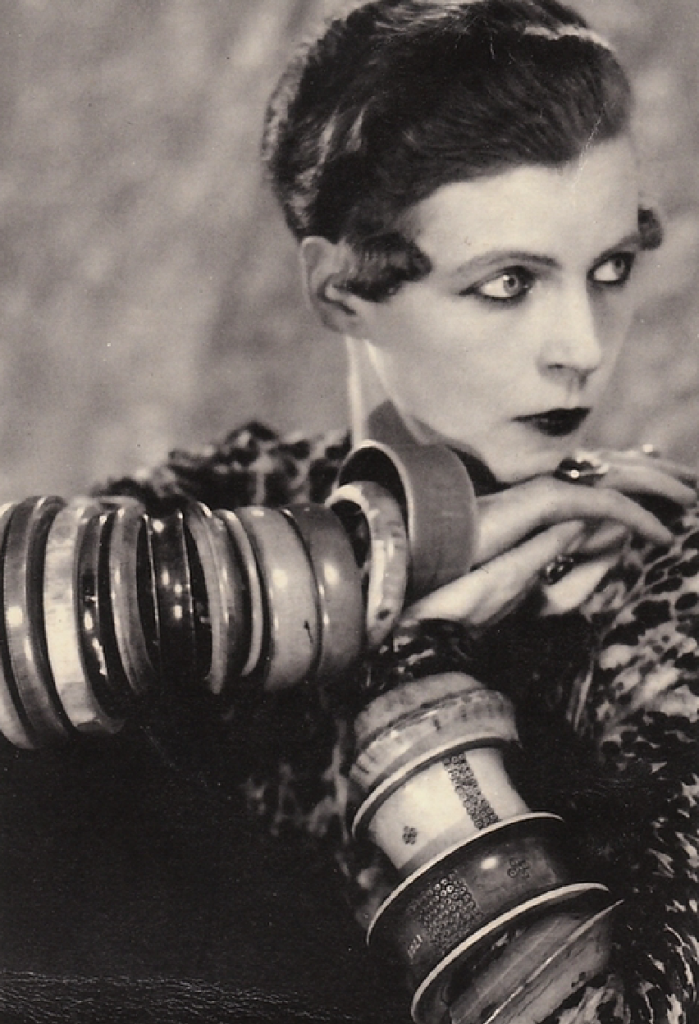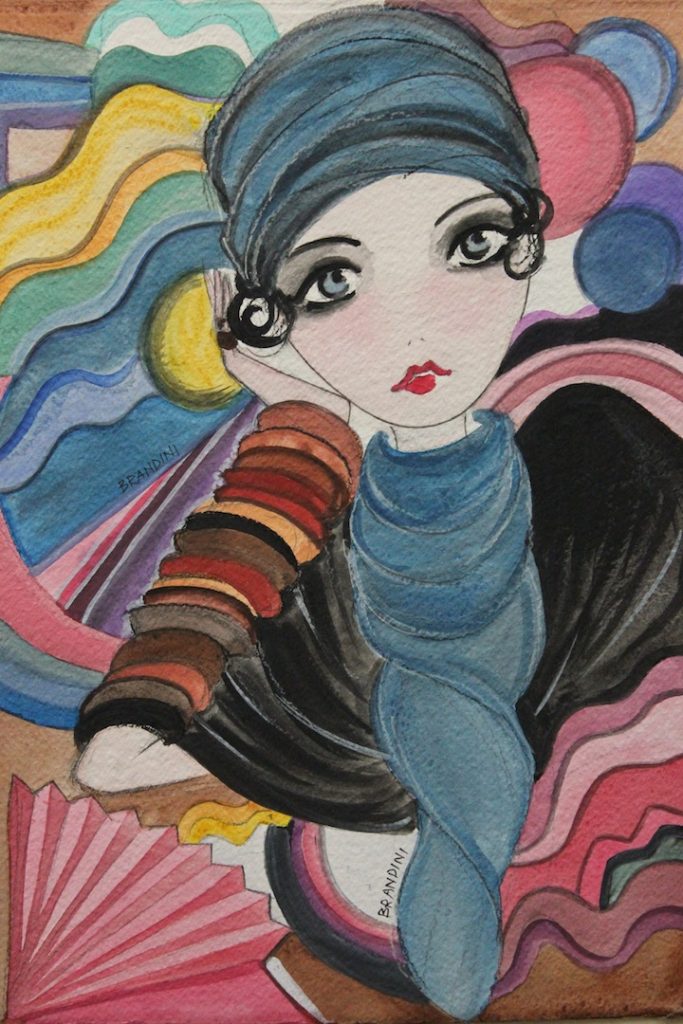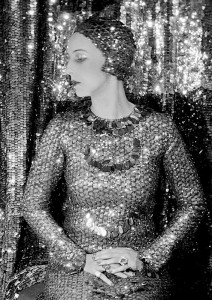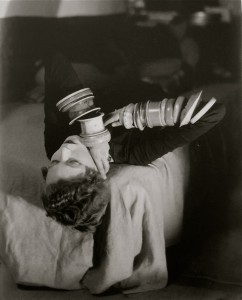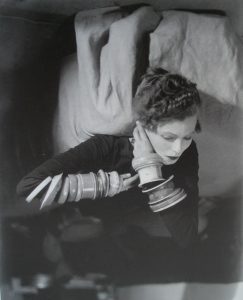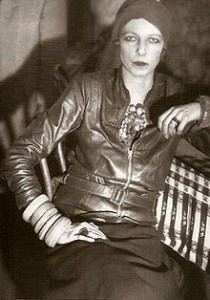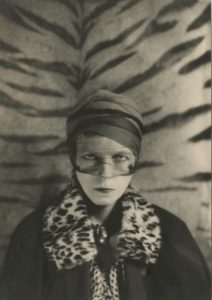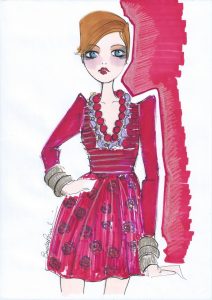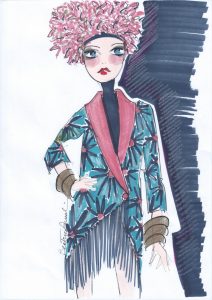Nancy Cunard
“BANGLES” by Beatrice Brandini
Nancy Cunard : ” Destiny, the story of a courageous woman and perhaps nonsensical.”
Today I decided to talk about another very important female figure : Nancy Cunard . An icon of style , nonconformity , courage and above all dedicated to giving voice to the “least ” .
Born in 1896 in England to a very rich family , destined for a gilded life but refuses early age . She would not be a favorite, did not accept the rules and the role that was then intended for women, even those wealthy, educated or worldly, that is of wife and mother, but only a pictures of ” contour”, at most, only protagonists of social gathering.
Nancy Cunard by Cecil Beaton
Reject her wealth, noble lineage, an education and a conservative culture that immediately felt far from her nature. So that the Cunard’s life was characterized by a total isolation, looking for a commitment that through literature, became a civil commitment.
She was sculpted by Brancusi, photographed by Man Ray and Cecil Beaton , painted by Kokoschka . A movie theater, in 1929 , will be Greta Garbo in her own face, in a film whose title (and subtitle) will be emblematic and prescient: ” Destiny, the story of a courageous woman and perhaps nonsensical.”
For me this exceptional woman was, until recently, “only” an icon of elegance, eccentricity , uniqueness. I’ve always associated her with the famous Man Ray’s photo, in which the Cunard looks away thoughtfully and her slender arms are “invaded” by large ethnic bracelets . Deepening studies and reading some books about her, I found out that this woman was much much more.
Cultured , passionate and radical in her battles against economic “white” imperialism, the oppression of blacks, inequality between the sexes. She was editor, writer, war correspondent and activist of all civil rights , especially against minorities.
Anticonformistic even in her private choices, such as love for the African American musician Henry Crowder.
Nancy Cunard by Man Ray
Important to mention “Outlaws” of 1921, the poem “Parallax” of 1925, and what is perhaps her most imported essay, the letter “Black Man and White Ladyship”, brave attack on the society from which she came, ideally towards the mother lady Cunard, perhaps the principal representative of all that Nancy refused: privileges, hypocrisy , authoritarianism.
The commitment to diversity, culminating in the anthology “Negro” in 1934. This work will seek to restore dignity to the African civilization, denouncing the origin of slavery by the American people and the consequent oppression, either by knowing the many wonderful facets of African culture, through memoirs, poetry, art, spirituals music, jazz and blues, ecc.
Be also very active against Spanish dictatorship, German and Italian, which culminated in the Second World War. The hatred against Franco and fascism turned into a rage almost paranoid that resulted in bouts of depression and some mental problems. However some of her reportages, such as those characterized by testimonies of the concentration camps, remain among the most vivid and shiny that have ever been written.
She died alone, in 1965, but she wrote to the end (when she was admitted to hospital in Paris, where she died after, churches wine, a pen and paper to write), untamed and stubborn to the end!
Nancy Cunard
Forgive me Mrs. Cunard if for a long time you have been to me only a muse of elegance, you have been an exceptional woman, an example for all of us !
This article has left me very bitterness, I wonder why it is so difficult to be fair and why the battles rights have always been synonymous with loneliness and suffering. Probably this is not the right context, but we should also reflect on this.
“Nancy today” by Beatrice Brandini
Good life to all, especially to those with courage, stubbornness and loneliness, are fighting for the underdog.
Beatrice


